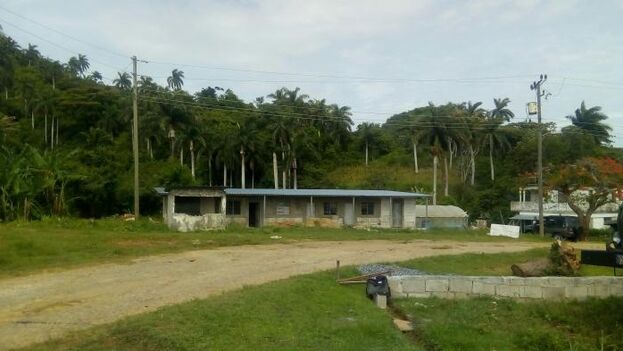
![]() 14ymedio, Havana, 20 December 2022 — Cuba’s Granma province, the one with the most dirt floors on the island, has not been able to escape the problem, one of those that the Cuban government proposed to eradicate two years ago and in which it has hardly made any progress. According to the official press, at the beginning of this year there were still 35,834 homes of this type. It was planned to eliminate 4,439 of them this year, but as of December only 1,462 had been modified, the majority (1,110) by the residents’ own efforts and only 352 through the State.
14ymedio, Havana, 20 December 2022 — Cuba’s Granma province, the one with the most dirt floors on the island, has not been able to escape the problem, one of those that the Cuban government proposed to eradicate two years ago and in which it has hardly made any progress. According to the official press, at the beginning of this year there were still 35,834 homes of this type. It was planned to eliminate 4,439 of them this year, but as of December only 1,462 had been modified, the majority (1,110) by the residents’ own efforts and only 352 through the State.
“We are facing a very tense year in the production of floors,” Yesser Izaguirre Ojeda, provincial director of Housing, told the State newspaper Granma. The shortage of cement, a material for which only 20% of what was forecast was obtained, and financing, which did not exceed 50% of what was projected, are the main causes. The municipalities in which the plan is progressing best are Bayamo, Guisa and Niquero, which fixed more than a hundred floors each, while in Media Luna and Manzanillo the fixes did not exceed 40.
The official explains that fixing a dirt floor costs an unaffordable amount today for Cuban families, with prices around 25,000 pesos for homes of just 50 square meters. The situation would be alleviated if the banks made the loans more flexible, extending the term, so they are trying to negotiate that possibility.
“It is not the same that you have to pay 15,000 or 20,000 pesos immediately after the construction related to the eradication of a dirt floor is carried out, than that you can do it, according to your income, over a certain period of time with multiple payments,” explained Izaguirre.
The problems in producing the materials – always attributed to the US ’blockade’ [i.e. the embargo] – are also among the reasons why it is impossible to have positive data on the eradication of these houses, which, moreover, the authorities consider a personal matter. This is reflected in the declarations of the official, who affirms as a “humanist principle of the Revolution (…) the purpose of eradicating all dirt floors,” including those of those who have illegal housing – the majority of cases – and are not recognized in the housing fund, which suggests a large hidden pocket of this type of residences.
The prices of construction materials, led by cement, have risen by almost 50% in Cuba in the last year. “Of an initial plan of 5,880 tons of P350 resistance cement, we have only received, to date, some 2,849 tons, which represents 48%,” says Sulaida Ferrales Cover, director of the producing company in the province.
This situation has meant the use of extender (an additive to increase the performance of a cement grout), with which 268 dirt floors were eradicated, as well as the manufacture of floors with brick, wood and marble trim (of the 20,931 square meters of mosaics and tiles planned, only 8,235 were manufactured, 39%), but even with that, the figures have not improved.
In this context, the authorities urge more and more alternatives to be produced locally, such as blocks or Roman cement, made with lime. “These variants are still not sufficiently exploited, neither by state entities, which can produce them, nor by the clients themselves, who often show reluctance to opt for them,” adds the manager.
In 2020, the Cuban Minister of Construction, René Mesa Villafaña, numbered homes with dirt floors on the island at 122,072 and described solving this problem as a “high priority.” For that year, he directed, 59,931 cement floors had to be laid, but the arrival of the pandemic and the worsening of the eternal Cuban crisis ruined all the plans.
In the last housing commission of the National Assembly, on December 11, the authorities recognized that the construction plan was once again breached, with only 76% completed. Throughout the year, 21,229 homes have been completed, only 2,000 more than last year, and around 7,000 dirt floors have been replaced throughout the Island.
The housing deficit in Cuba exceeded 800,000 the last time official figures were released, but the state of most housing is also very precarious. This situation coexists with the increase in premises or residences for sale and rent, caused by the massive departure of hundreds of thousands of Cubans in the last year.
____________
COLLABORATE WITH OUR WORK: The 14ymedio team is committed to practicing serious journalism that reflects Cuba’s reality in all its depth. Thank you for joining us on this long journey. We invite you to continue supporting us by becoming a member of 14ymedio now. Together we can continue transforming journalism in Cuba.
